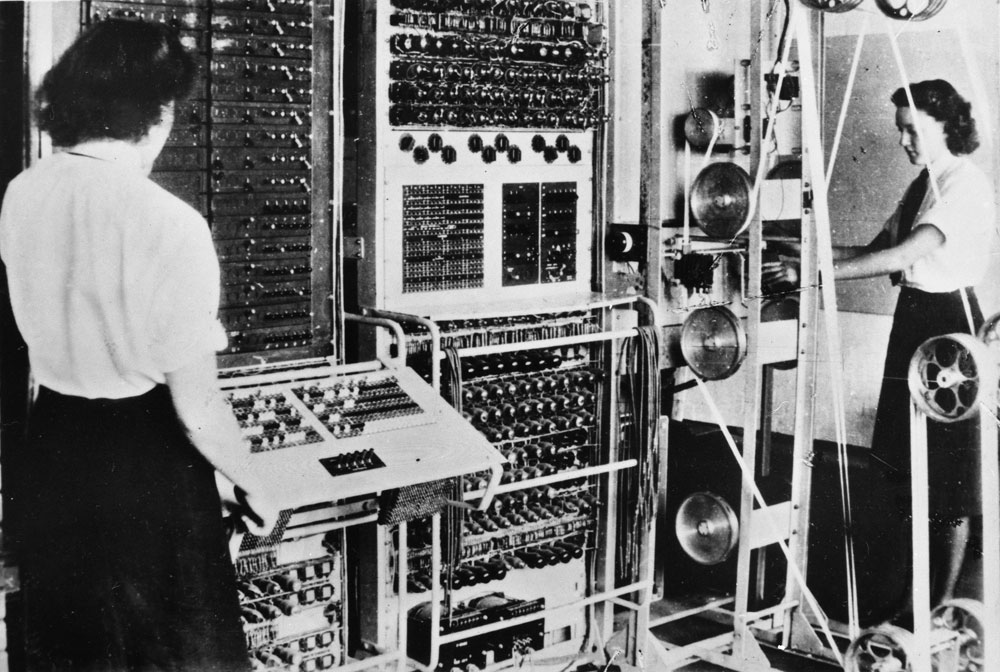The way we record and store information is constantly changing – from paper, to hybrid documents such as digitised surrogates, to born-digital records such as emails and digital photographs.
Digital storage is more delicate than paper, parchment or stone. A stone tablet locked behind museum glass has inherent value if you can read and understand the language; this is not the case with digital material, which relies on contingent hardware and software to remain accessible. Therefore, it is vital that digital information is managed in a systematic way.
Digital continuity is the ability to use information in the way you need, for as long as you need. Information is usable if you can find it, open it, work with it, understand it and trust it.
Imagine if you couldn’t find information requested by your minister for a public inquiry or parliamentary questions because it was saved in an unsupported format. Imagine if you couldn’t claim pension benefits because your records were mismanaged and became corrupted. Imagine if the servers that held the only copies of your company’s records were destroyed by a natural disaster or sabotage.
The National Archives has developed step-by step guidance to help you plan for, define, manage and maintain digital continuity.
Digital continuity in practice
For digital continuity to be achieved information must be stored and managed for it to remain usable, available and complete.
If you do not actively work to ensure digital continuity and embed it in your organisation’s culture and work practices, your digital information can easily become unstable, unusable or irretrievable. What constitutes usable will vary across organisations, so it is vital to identify the needs and requirements specific to your own organisation and particular areas of work.
One of the major risks to digital continuity is when an organisation experiences change. Organisational change can materialise through changes in management, the way an organisation works or does business, or changes to technology infrastructure.
There are several real-world examples of digital continuity loss used in our guidance; one such example comes from 2010 when Pixar began developing the storyboard for Toy Story 3. At the beginning of the project animators went back to look at their creations from the original Toy Story movie, made in 1995. When they opened the files they found they couldn’t work with the content in the way they needed to. Director Lee Unkrich explains how the team were unable to open the graphic files from the original film: ‘It’s like a read-only file. Ultimately, we could look at the images but we couldn’t do anything with them’. In the 15 years since the first film was made, changes to technology meant animators could no longer use the information in the way they needed to – a loss of digital continuity, as well as a needless waste of time and resources.
Guidance refresh
The National Archives has recently refreshed its guidance suite on digital continuity, first produced by the Digital Continuity Project team in 2011.
There are a range of services and solutions available in our new suite of guidance to support digital continuity. These services and solutions can be adopted by both public and private sectors alike, and are not just aimed at UK government departments. The guidance provides expertise on specific areas of digital information management and information technology. It covers advice on systems and processes, but also focuses on improving the use of what is already in place to achieve the best value possible.
The new guidance focuses on wider responsibilities relating to the management of digital continuity, rather than on specific, designated roles.
It includes updated guidance on DROID, The National Archives’ tool for profiling file formats. DROID is a software tool developed by The National Archives to perform automated batch identification of file formats. Profiling your file formats helps you to manage your information more effectively, while helping you to identify risks and plan mitigating actions.
There is also a new Information Management Self-Assessment Tool available, created as part of The National Archives’ Information Management Assessment (IMA) programme. This new tool has been developed to assist government organisations in assessing the effectiveness of their approach to information and records management and has a section dedicated to digital continuity.
The National Archives also runs free Digital Continuity training from our site in Kew.
Achieving digital continuity
The new digital continuity guidance has retained the original four-stage process developed in 2011. Sticking to this process will enable you to:
- establish your scope and priorities for digital continuity
- establish responsibilities and resource commitments and allocate roles to take action
- define your digital continuity requirements
- prepare to assess risks to digital continuity
- prepare to embed digital continuity in your information management, IT strategy and environment, and change management
Managing digital continuity protects the information you need to do business. It enables you to function accountably, legally, effectively and efficiently. It helps you to protect your reputation and make more informed decisions – it avoids and reduces costs, and it delivers better public services. If you lose information because you haven’t managed your digital continuity properly, the consequences can be as serious as those of any other information loss.
To find out more about the legacy of the Digital Continuity Project read our 2014 blog on building the future and preserving the past.

nice article
Amazing read! This article well describes why’s and how’s of digital continuity.